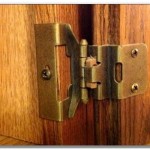Painting Kitchen Cabinets Distressed Look
Transforming your kitchen cabinets with a distressed look is a captivating DIY project that can rejuvenate the heart of your home. This guide will delve into the essential aspects of achieving a perfectly distressed finish, empowering you to create a charming and character-filled space.
Preparations:
Before diving into the painting process, meticulous preparation is crucial. Thoroughly clean the cabinet surfaces to eliminate dirt and grease. Remove doors and hardware for easier access and a more precise finish. Sand the cabinets lightly using fine-grit sandpaper to enhance paint adhesion. Protect surrounding areas with drop cloths and painter's tape.
Base Coat and Glaze:
Apply a base coat of your desired color using a paintbrush or foam roller. Allow ample drying time before applying a glaze. The glaze adds depth and accentuates the distressed effect. Choose a glaze that complements the base color, typically a darker shade for a more pronounced distressed look.
Creating the Distress:
Once the glaze is dry, it's time to create the distressed effect. Use a sanding sponge or fine-grit sandpaper to gently distress the edges and raised areas of the cabinets. Focus on areas that would naturally experience wear and tear, such as corners, handles, and drawer fronts. Avoid excessive sanding to preserve the integrity of the finish.
Antiquing Medium:
To enhance the distressed appearance, apply an antiquing medium or dark wax to the sanded areas. Use a cloth or brush to work the medium into the crevices, creating a more aged effect. Wipe away any excess to prevent the finish from becoming too overpowering.
Final Touches:
Once the antiquing process is complete, apply a clear protective finish to seal and protect the distressed finish. Choose a polyurethane or varnish that offers durable protection against wear and tear. Lightly sand the finish using fine-grit sandpaper to create a smooth surface and enhance the distressed character.
Tips for a Successful Distressed Finish:
- Use high-quality paint and glaze for lasting results. - Experiment with different glazing techniques to achieve varying effects. - Apply light, even coats of paint and glaze to prevent runs or drips. - Allow ample drying time between each step to ensure proper adhesion. - Protect the distressed finish from moisture and direct sunlight to extend its lifespan.
Conclusion:
Painting kitchen cabinets with a distressed look is an accessible and rewarding project that can add charm and character to your home. By following these steps, you can create a stunningly distressed finish that will transform your kitchen into a timeless and inviting space. Embrace the imperfections and enjoy the unique beauty of your revitalized cabinets.

Rescuing And Reviving A Glazed Distressed Kitchen Bella Tucker

Distressed Kitchen Cabinets How To Distress Your Our Fifth House

Rustic Style Really Brings The Excitement To Room It Works Great With Farmhouse And Distressed Kitchen Cabinets

Rescuing And Reviving A Glazed Distressed Kitchen Bella Tucker

Rescuing And Reviving A Glazed Distressed Kitchen Bella Tucker

Chalk Painted Kitchen Cabinets 2 Years Later Our Storied Home

Stress Less With Distressed Cabinets

Distressed Worn Looking Kitchen Cabinet Designs

Rescuing And Reviving A Glazed Distressed Kitchen Bella Tucker

Distressed And Antiqued Kitchen Cabinets
Related Posts








